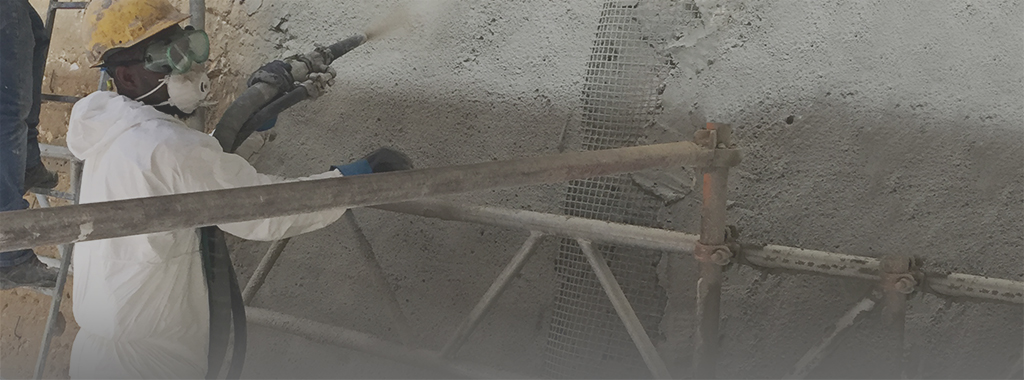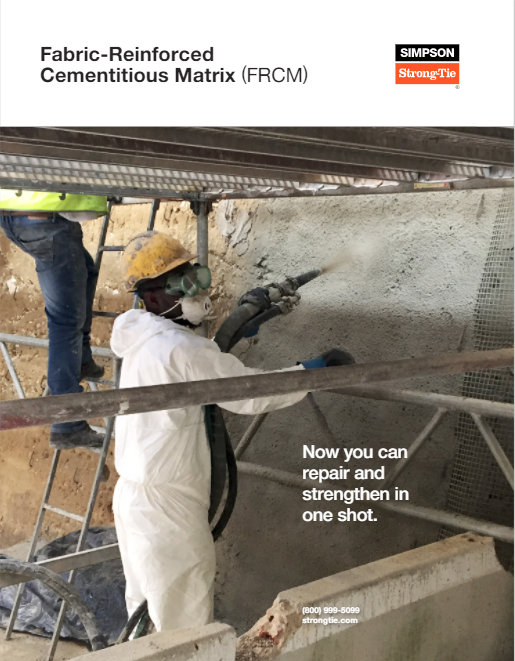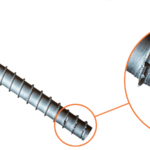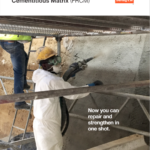On February 14, we hosted the third interactive webinar in the Simpson Strong-Tie Composite Strengthening Systems™ Best Practices Series: “Introducing Fabric-Reinforced Cementitious Matrix (FRCM).”
Simpson Strong-Tie engineering manager Brad Erickson, S.E., P.E., and Simpson Strong-Tie senior product manager Mark Kennedy, PMP, conducted an informative discussion of this new product solution. You can view the webinar in our Training Center and take a course to earn one hour of CEUs, PDHs and AIA LU/HSW credits. The course and webinar discuss installation steps, identify projects where FRCM would be ideal, and cite testing and industry standards associated with FRCM.
At the end of February’s webinar, we asked participants to submit further questions about this innovative product. We’ve answered some questions below and you can review all the FRCM webinar questions and answers here.
What is the cure time for overhead applications? When FRCM is applied to bridges and train tracks, how do we account for the vibrations’ effects on the cure process?
The initial set of the matrix takes approximately five hours, with the final set taking less than eight hours. For a project with potential vibration issues, it would be best to eliminate vibrations for the CSS-CM to achieve final set. If this closure would be an issue, a small field trial demo on this particular structure may be prudent to check how the vibrations affect the strength of the FRCM’s bond to the substrate.
If FRCM was used to strengthen a residential concrete foundation, could a two-part elastomeric coating be sprayed over it, and if so, how long should the FRCM be allowed to cure before being sprayed over?
Yes, an elastomeric coating could be placed on top of an FRCM installation. We would recommend waiting at least 28 days to allow the FRCM mortar to cure before applying the elastomeric coating. We would also recommend allowing the moisture content of the mortar to drop below 5% prior to applying elastomeric coating.
In practice how does one obtain the CSP profile? We find this difficult to obtain in the field.
Sandblasting, shotblasting and water-blasting could all provide a CSP 6-9 profile.
Could this be used in a soil nail wall in lieu of a shotcrete wall, or is it typically too thin? Anchoring the soil nails to the grid could be an issue, too.
FRCM should not be used as the primary structural system but could be used in combination with a reinforced concrete wall as a retrofit.
How many hours of training will the technician need to spray the matrix safely and properly, and what’s the cost associated with this training?
Training is provided at no cost and typically lasts about half a day.
What are the thickness limitations when using FRCM?
FRCM applications could be as thin as 1/2″ for one-layer grid installations or as thick as 3″ from the face of the substrate for up to four layers of grid. These dimensions do not include rock pockets or other voids in the substrate that can also be repaired with CSS-CM.
In view of the no-cover restrictions, how does this product meet fire-protection requirements?
We have a four-hour UL rating on our FRCM system. The matrix will also help the fire cover requirements of the rebar in the element being strengthened.
If surface preparation exposes existing reinforcement materials, or substantially reduces concrete cover for existing reinforcements, how do you provide the required concrete cover for the existing reinforcement?
The matrix of the FRCM system replaces the cover concrete removed during surface prep.
What surface preparation is required for fire-damaged concrete prior to FRCM application?
Demo to solid concrete and remediation to damaged rebar would be required prior to FRCM application.
Can’t you just prerake surfaces between layers?
That’s not required. Additional layers of matrix can simply be sprayed onto grid installed into previous layers of matrix.








